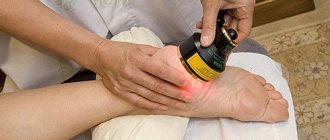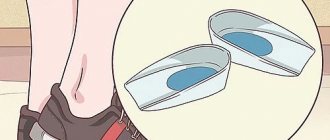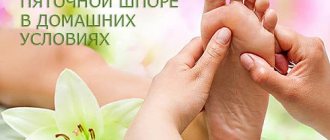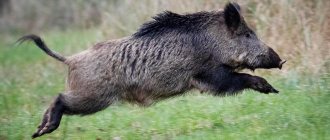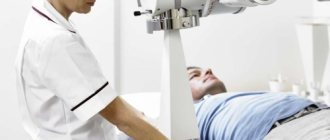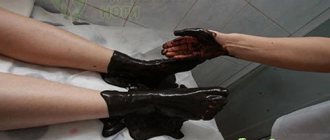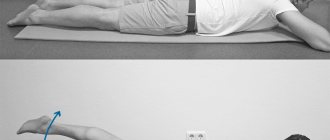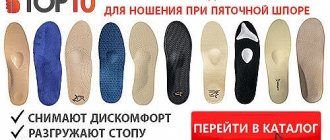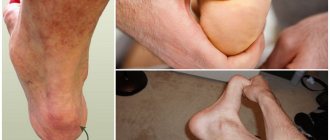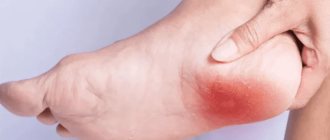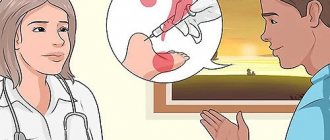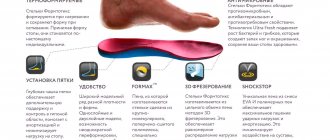Inflammation of the heel fascia leads to the formation of a bone-salt build-up, which is accompanied by unbearable pain and interferes with walking.
An effective remedy for resolving the heel spike is medical bile. This accessible and inexpensive substance can be used as a solution for lotions or as part of creams created specifically to get rid of heel spurs.
How to use bile to treat heel spurs, which method of use gives the best result? We will talk about this in our article.
Medical bile for heel spurs
Medical bile, the use of which for heel spurs helps to get rid of the thorn, is obtained from farm animals. It is very rare to buy bear bile in a pharmacy. In traditional medicine, the solution is prescribed as an adjunct to drug therapy.
The substance is a minimally viscous liquid of yellow-brown color with a strong unpleasant odor. In addition to animal liver secretions, the solution contains: ethyl alcohol, antiseptic compounds, fragrances, stabilizers.
The drug is produced by Russian pharmaceutical companies and is sold in glass or PET bottles with a capacity of 100-300 ml. You can buy medical bile without a prescription, however, like any pharmaceutical drug, this substance must be used according to the instructions.
Attention! Medical bile is used for external use. Ingestion of this substance is strictly prohibited!
How does bile affect heel spurs?
Medical bile solution has the following effects on the heel with inflamed fascia:
- reduces inflammation thanks to active anti-inflammatory enzymes synthesized by the liver of animals;
- relieves swelling;
- promotes the resorption of bone-saline thorn;
- relieves pain;
- warms and activates metabolic processes;
- improves blood circulation;
- enhances the regeneration of connective tissues;
- softens dead skin.
Folk remedies against heel spurs based on medical bile are excellent in helping at the initial stage of fasciitis and for preventing the formation of thorns. However, if there is a painful growth, medical bile alone cannot overcome the disease.
For complete treatment of spurs, it is necessary to take anti-inflammatory drugs, physiotherapy, wear silicone insoles and heel pads for heel spurs, which reduce the risk of injury to the fascia of the foot.
Reviews
How effective is bile treatment for heel spurs? Reviews from those who have already used this product will help you find out the answer to this question.
Irina:
“I work as a hairdresser, I’m on my feet all day, I can’t sit down. And with age, I gained more weight and my heels began to hurt. At first I didn’t pay attention, but then the pain intensified. With every step it felt like I was stepping on a nail. I went to the clinic, and after an examination the doctor said it was a heel spur. They made a blockade. To enhance the effect, the doctor recommended bile. I carried out 5 procedures, following the instructions, and could not be happier - the pain was almost gone. And after 3 weeks I felt completely healthy. I work again and walk a lot, but I periodically repeat the course of treatment for prevention.”
Svyatoslav:
“My mother is a pensioner; she worked as a teacher for many years. During lessons I had to stand a lot. With age, pain in the heels appeared, which gradually increased. Then she had difficulty supporting herself on her soles, began to walk very poorly, and persuaded her to go to the hospital. Along with other medications, the specialist recommended bile. We bought it and started treatment. Of course, it smells unpleasant, but it helps a lot. Within a week, my mother began to feel the desire to walk, as the pain had decreased.”
Working on your feet provokes the development of plantar spurs
Svetlana: “I used to be actively involved in sports and dancing. Unfortunately, with age, physical activity has become less, family and work take up a lot of time. My soles began to hurt and I could hardly step on my heels. When the pain became completely unbearable, I went to the doctor. In addition to medications, he advised applying bile compresses. Every day I steamed my legs and did lotions. It helped. After a month I felt good again.”
Of course, bile is not the best and only remedy that helps with spurs, but judging by the reviews of its use, it helped many to quickly reduce all the symptoms of the disease.
Treatment of heel spurs with bile at home
On the Internet you can find many recipes for removing spurs that contain medical bile. Not all of these recipes are effective, and many are unsafe, for example, you cannot mix bile with kerosene, tars and other dangerous substances.
Before using bile, it is best to consult a doctor who can suggest the most effective treatment methods.
We have selected 6 proven recipes that have no contraindications and can be easily applied at home. A course of bile treatment consists of 20-35 procedures. Compresses should be done daily without breaks - this is the only way to get a positive result.
To carry out the procedures you will need:
- gauze, bandages and cotton swabs;
- wide elastic bandage;
- cling film or plastic bag;
- warm socks made from natural fabrics.
To speed up the healing of the fascia, orthopedists recommend using a Strasbourg sock at night, which fixes the feet in such a position that the restoration of the heel tissue occurs quickly and painlessly.
Contraindications
Before using bile, you must familiarize yourself with the restrictions that are indicated in the instructions for the drug. These include the following circumstances:
- individual intolerance to the components of the drug;
- acute skin diseases in the foot area (rash, boils, dermatitis, eczema);
- damage to the integrity of the epidermis (cracks in the heels, wounds, calluses);
- the presence of regional lymphadenitis of unknown etiology;
- childhood.
Use the product with caution during pregnancy and lactation. Before using bile, expectant mothers are advised to consult with a supervising specialist.
Top 6 best recipes: how to use bile for heel spurs
Regular compress
A gauze or cotton pad is soaked in bile and applied to the fascia of the heel. The top is covered with a film or bag and tied with a bandage.
To increase effectiveness, you need to wear a sock and use a heating pad. Microwave heated slippers are best; you can buy them on our website.
Make a compress of medical bile for heel spurs 1-2 r. A day for two to three hours.
Bile with vodka
Take 100 grams of bile and 50 grams of vodka, mix it and add a spoonful of shampoo to the resulting solution. The compress is applied using a gauze swab, a bag and secured with a bandage.
After removing the compress, it is recommended not to wash the foot for 2-5 hours, although medical bile has an unpleasant odor.
Lotion with birch bark
Thin strips are extracted from birch bark and moistened in medicinal bile, and then applied to the heel and secured with an elastic bandage.
The bark has an aseptic, anti-inflammatory effect, and in combination with bile the effect is greatly enhanced, which leads to the resorption of the thorn.
Lotion with laundry soap
A bar of soap is rubbed and placed in a steam bath. 50 grams of vodka or cognac and 100 grams of bile are poured into the resulting mixture. Everything is mixed and used as a lotion at night.
Potato compress
Grate a raw potato, pour in 100 grams of bile. Apply the resulting composition to the heel, secure with a bag and a bandage. Leave to act for 5-6 hours.
Lotion with glycerin
The recipe is suitable for those who experience skin irritation from exposure to bile. Glycerin softens the negative effects of the substance and moisturizes the skin of the feet. To prepare, the components are mixed 1 to 1 and applied as a regular lotion for as long as possible.
There are other methods for treating heel spurs at home using medical bile. Before using recipes, it is worth considering that most of them require a long exposure time. A compress for 30-60 minutes will not give any results.
Also during treatment it is necessary to pay attention to unloading the foot, especially the calcaneal fascia. This requires wearing orthotics to protect the heels from impact forces and a Strutz arch support to support the arch and stretch the fascia.
The order of treatment procedures
Treatment with bile should begin when the first symptoms of a heel spur appear. It is recommended to use the medication as part of complex therapy, in combination with other medications and physiotherapeutic procedures.
Therapy is carried out using compresses applied to the affected heel
To avoid allergies, it is advisable to conduct a sensitivity test before the procedures. To do this, a small amount of bile is applied to the back surface of the skin of the forearm. After 10 minutes it becomes clear whether the product can be used. If there is no redness or swelling of the skin, itching or discomfort in the area where the medicine is applied, it can be used.
So how to treat a spur? In order not to harm yourself and achieve maximum therapeutic effect, you must adhere to the following simple recommendations:
- Take a hot foot bath.
- Wipe the sole thoroughly.
- Fold the gauze or bandage into 5-6 layers, soak it in the product and apply it to the skin in the affected area.
- Cover the compress with wax paper with a small layer of cotton wool and secure with a bandage.
- Put a wool sock on top.
The procedures are performed at night. In the morning, after removing the lotion, remove any remaining drug with a damp cloth.
The therapeutic course consists of 25–30 daily sessions. After a month's break, treatment must be repeated.
Regular compresses bring noticeable relief after 5-7 procedures. But, despite the rapid positive changes, treatment must be continued.
The use of bile for heel spurs: advantages and disadvantages
If you have a heel spur, treatment with medical bile can give good results. However, before starting a course of procedures, it is recommended to evaluate all the advantages and disadvantages of this method of treatment.
Advantages:
- no side effects;
- low cost.
Flaws:
- long course of treatment to obtain an effect;
- has an unpleasant odor;
- If used incorrectly, burns may occur;
- tedious methods of preparing compresses;
- Compresses need to be worn for several hours.
As you can see, treatment with bile, although it brings a noticeable effect, is not always convenient. Most patients give up this method of getting rid of spurs after 1-3 procedures due to lack of time.
How to treat a heel spur with bile and spend a minimum of time and effort? For this purpose, effective ointments for heel spurs based on bile, called “Pyatkashpor,” were specially developed.
How to treat a heel spur with medical bile using ointments from the “Pyatkashpor” series?
The creams included in the Pyatkashpor line include highly purified medical bile and additional components:
- propolis, which has anti-inflammatory and strengthening effects;
- emu oil, which relaxes the fascia of the foot;
- apple cider vinegar, which dissolves growths and softens the skin;
- caffeine, which enhances regeneration.
The ointment also contains glycerin, which retains liquid in the layers of the epidermis, relieving the skin of the legs from keratinization and dryness.
The concentration of medical bile in Pyatkospor creams is different: the most bile is contained in the Pyatkaspor Strengthened ointment, which is used to eliminate bone-salt build-up during an exacerbation of the disease.
Unlike “grandmother’s” recipes, using “Pyatkashpor Ordinary” ointment is very simple: the composition is applied to washed feet and rubbed in easily. It is very effective to use a cream with bile after a massage for a heel spur at home or a steaming foot bath.
Specialized creams from the Pyatkospor line have the following effects:
- They destroy bone-salt growth and prevent the growth of a new thorn.
- Reduce discomfort and pain.
- Restores the normal balance of the epidermis and improves blood circulation.
- They disinfect and have an anti-inflammatory effect.
- Helps remove excess salts.
- Eliminate cracks, keratinization and dryness on the heels.
- They have an anti-edematous effect.
- Contains vitamins, propolis and essential oils.
- Deodorizes and eliminates unpleasant odors.
- Relieves fatigue and tones the feet.
The cream can be applied after therapeutic exercises for heel spurs, when the fascia of the foot is as warm as possible. You can also use Pyatkashpor in the morning to eliminate pain caused by inflammation of the fascia and growth.
The series includes 3 types of cream, which allows you to choose the most optimal option in terms of composition and action:
- Reinforced - to remove a thorn in the acute stage;
- Regular - for the treatment of small spurs at the initial stage of the disease;
- Preventative - will prevent the appearance of a thorn.
Pyatkashpor Prophylactic ointment can be used as an evening cream to treat the feet if there is a predisposition to fasciitis, as well as with the frequent appearance of calluses, keratinized areas, and corns.
In comparison with bottled medical bile, treatment of fasciitis with Pyatkashpor has the following advantages:
- the cream is quickly absorbed and has a pleasant consistency and smell;
- the concentration of medical bile in the cream is optimal, which eliminates the occurrence of burns;
- 5-10 minutes are enough to apply the product;
- the effect of application is noticeable within a week;
- has a natural hypoallergenic composition;
- economical consumption, applied in a thin layer;
- approved by orthopedic doctors.
Unlike liquid bile and other anti-spur remedies, Pyatkashpor ointments can be used for a long time, without the development of resistance (resistance) from pathogenic microflora.
Medical bile for heel spurs: patient reviews and doctors’ opinions
Patient reviews of the treatment of spurs with a solution of medical bile are mostly positive. Negative statements are usually associated with the difficulties of preparing compresses and the duration of the procedures.
Almost all people who have used ointments from the Pyatkashpor series note their high efficiency and ease of use.
Review (Oksana, 38 years old): “I have had a spur on my heels for a very long time, it disappears and then appears again. I know that at the first signs, compresses with bile help very well. Unfortunately, it is not always possible to make a compress or keep it for the required time. Fortunately, these methods can now be replaced with Pyatkashpor cream. It also acts effectively and actively moisturizes the skin. “I constantly use Pyatkashpor Prophylactic and thorns do not appear.”
Orthopedic doctors, answering the question of whether bile helps with heel spurs, also speak positively about this remedy, but at the same time emphasize that compresses with bile and creams as an independent method of treatment help only in the initial stage of the disease. If there is severe pain and the growth of a bone spine, it is necessary to consult a specialist to prescribe drug therapy.
Treatment of achillobursitis (achillodynia)
Achilles bursitis is one of the types of bursitis. It is an inflammation of the lining joint capsule (synovial capsule), which is located at the site of attachment of the Achilles tendon to the heel bone, surrounding the latter. In the above segment, there are two such bags that serve as shock absorbers while walking, running, and in general when moving. In the presence of an inflammatory process in the lining joint capsules, excess fluid (exudate) begins to be released, which is characterized by the appearance of a noticeable formation in the heel area and leads to atrophy and thickening of the walls of the joint capsule, as well as compaction and coarsening of the surrounding tissues. This, in turn, leads to disruption and limitation of the motor function of the joint and the appearance of pain in the affected area. The course of the disease can be acute, subacute, chronic, or recurrent. Risk group
Achilles bursitis can affect absolutely any group of people whose profession involves prolonged walking or standing, or heavy lifting, since the main factor leading to the development of the disease is prolonged physical activity on the heel area - such as walking, running, as well as loads arising due to excess weight or prolonged exposure to mechanical irritants - for example, tight or hard shoes. The joints do not have time to recover from the stress received, and this can cause inflammation. It can also be caused by a simple sprain. In women, it usually occurs due to wearing shoes that are too tight or have high heels. In men, it can occur as a result of prolonged and excessive physical exertion during sports.
The risk group also includes people of the older age group, since in old age the appearance of pathology occurs due to loss of strength and age-related changes in the structure of the tendons, as a result of which scar tissue begins to form in the heel area. Causes of achchylobursitis:
- mechanical injuries (bruises, sprains, dislocations, cuts, abrasions) contributing to direct infection;
- secondary infection with internal pathogens associated with the presence of any primary diseases in the patient’s body, such as joint damage (for example, rheumatoid arthritis, synovitis, arthrosis, etc.), various pathologies of bone structures, vascular diseases and chronic neuralgia, diabetes mellitus , various acute and chronic infections (brucellosis, tuberculosis, gonorrhea, syphilis, etc.);
- primary diseases of an immune nature leading to the development of inflammation;
- abnormalities of metabolic (metabolic) processes;
- deformations of the calcaneus of various etiologies;
- hollow or flat foot;
- axial disorders (clubfoot);
- muscle imbalance.
Classification of Achilles bursitis (according to several parameters)
- With the flow:
- acute – it is characterized by a sharp and painful onset; it occurs, as a rule, as a result of external infection as a result of various types of mechanical injuries;
- subacute;
- chronic – symptoms are muted, unclear; the inflammatory process develops gradually; occurs due to the presence of primary diseases in the body;
- recurrent.
- By pathogen:
- nonspecific, arising due to macro- and microtraumatization and damage by nonspecific pathogens (staphylococcal, streptococcal, pneumococcal, etc.);
- specific, arising due to secondary infection with specific infectious agents (according to the type of primary infection there are: gonorrheal, brucellosis, tuberculosis, syphilitic, etc.).
- By exudate:
- serous;
- purulent;
- hemorrhagic.
- By type of inflammation:
- purulent;
- viral;
- bacterial;
- infectious
- By localization:
- heel;
- heel;
- retroachillary, as well as: Haglund's deformity (posterior bursitis) - inflammation of the synovial sac between the ligament and the skin;
- anterior bursitis - swelling between thick connective tissue and bone;
- Albert's disease - inflammation in the front at the site of attachment of the bone and tendon;
- subcutaneous heel bursa.
infectious;
heel;
Symptoms and signs
- severe throbbing pain in the heel and Achilles tendon when walking, which can spread to the entire ankle and does not stop at rest;
- swelling and redness in the area of the Achilles heel;
- swelling around the affected segment (usually spindle-shaped);
- limited ankle mobility;
- hyperthermia in the heel area (sometimes up to 39-40ºС);
- general hyperthermia of the patient’s body during the acute course of the disease;
- audible crunching sound when walking and running;
- increasing lameness, with the risk of tendon rupture due to continuous stress on the affected joint.
If there is an already developed inflammatory process in the synovial bursa of the heel, the patient experiences severe pain in the affected area when walking or running, and redness and swelling in the ankle joint also occur. In the event of an infection in which suppuration occurs, severe complications may develop - such as purulent bursitis, phlegmon and even sepsis.
Diagnostics
Diagnosis of Achilles bursitis is carried out in stages. The following tests are prescribed:
- blood test for uric acid levels;
- analysis for microscopic examination of synovial fluid.
In order to definitively clarify the diagnosis, the following instrumental research methods may be additionally prescribed:
- radiography;
- Ultrasound – to assess the condition of the tendon, musculo-ligamentous apparatus and the presence of an inflammatory process;
- MRI;
- diagnostic puncture for taking exudate for bacteriological culture for flora and biochemistry in order to identify the type of infection and identify sensitivity to antibiotics.
Treatment
Therapy for achillobursitis (especially infectious or post-traumatic) must be started as early as possible in order to prevent the development of serious complications and the transition of the process to a protracted, chronically recurrent form.
In the first days of the disease, it is necessary to limit physical activity. For this purpose, we recommend using special splints and fixing bandages; in some cases, bed rest is indicated.
Painkillers and anti-inflammatory drugs (analgesics, antibacterial agents, NSAIDs, and compresses with dimexide) are also indicated.
In order to restore cartilage and bone structures, intra-articular injection of hyaluronic acid preparations is carried out; the most effective drug for this pathology is OST TENDON because it blocks pain receptors, inhibits inflammatory mediators and acts as a transport medium with a high content of nutrients.
In some cases, a puncture of the synovial bursa with aspiration of the contents and the introduction of medications (corticosteroids, antibiotics, etc.) into it is indicated. In the presence of purulent contents, the patient undergoes drainage of the synovial bursa of the joint against the background of intensive antibacterial treatment.
Physiotherapeutic treatment: laser therapy, ultrasound with hydrocortisone and shock wave therapy. Shock wave therapy is by far the most effective way to treat achilles bursitis. SWT restores cellular structure, reduces pain, destroys calcifications, improves metabolism and microcirculation, resolves fibrosis and stimulates collagen production. It has virtually no side effects or contraindications. The wave penetrates the tissue and eliminates signs of inflammation without disrupting the functions of the joint. The number of wave therapy sessions is determined by the stage of the pathology. The break between procedures is 3 – 6 days. SWT is a good alternative to surgery.
Also used in the treatment of the disease:
- various reflexology techniques;
- manual therapy, including osteopathic techniques;
- classic therapeutic massage;
- kinesio taping.
If the medication method and physiotherapy do not give a positive result, i.e. and the inflammatory process does not stop, then surgical intervention is indicated.
After completion of treatment, patients are recommended to visit the appropriate specialist from time to time for examination and necessary preventive measures to prevent the recurrence of the disease, especially in cases of a relapsing form of its course.
